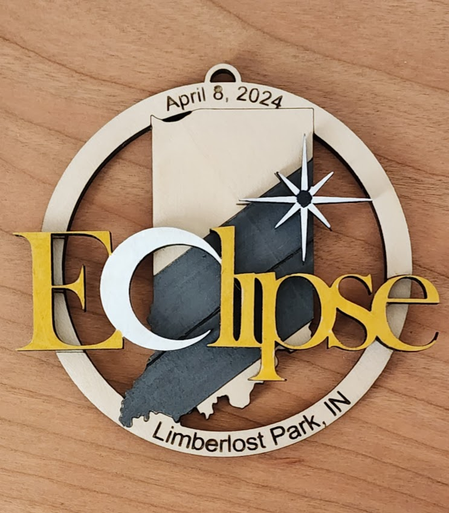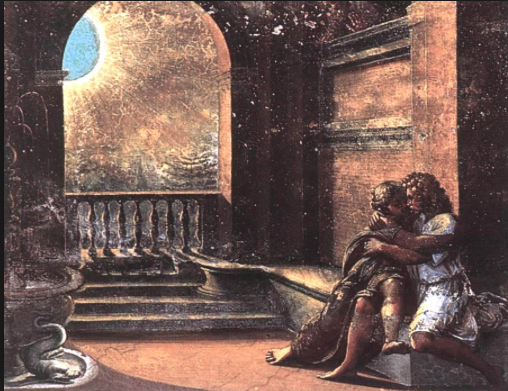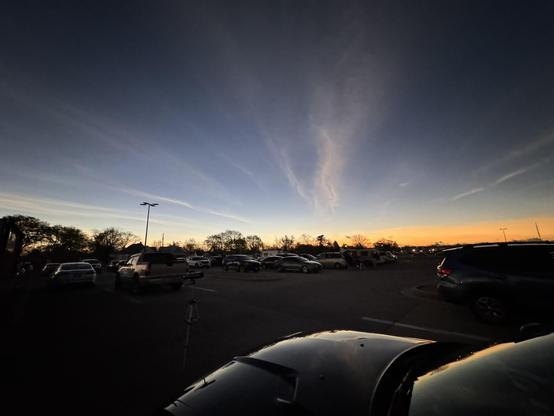Witness the longest solar eclipse in 100 years! Here's when and where to see the century's most extended celestial event
https://atlas.whatip.xyz/post.php?slug=witness-the-longest-solar-eclipse-in-100-years-heres-when-and-where-to-see-the-centurys-most-extended-celestial-event
"Chase the Shadows: Don't Miss the Longest Solar Eclipse in a Century on August 2, 2027!"
#space #astronomy #solareclipse #celestialevent #stargazing
#SolarEclipse
I haven't made a lot of ornaments but I'm pretty proud of this one I made to commemorate seeing the full solar eclipse in 2024 😃
August 2, 2027, to save you a click. #SolarEclipse #eclipse #NASA #sun #moon https://www.wired.com/story/the-longest-solar-eclipse-for-100-years-is-coming-dont-miss-it/
The Longest Solar Eclipse for 100 Years Is Coming. Don’t Miss It
La plus longue éclipse solaire du XXIᵉ siècle arrive le 02/08/2027 — 6 min 22 s d’obscurité totale, un spectacle qu’on ne reverra pas avant un siècle. https://www.gitelescourlis.fr/la-plus-longue-eclipse-de-lhistoire-approche-avec-un-spectacle-unique-dans-le-ciel-qui-ne-se-reproduira-pas-avant-100-ans/ #Space #Science #Astrophysics #Eclipse2027 #SolarEclipse
I love this sculpture on a wall at the junction of Byres Road and University Avenue in West End of Glasgow. Created in 1993 by Michelle de Bruin and Callum Sinclair, this is the first time I've seen it lit up in a very long time. Known locally as the Sun and Moon Clock, I've always known it (possibly incorrectly) as the Eclipse as it appears to depict a solar eclipse, with the central part representing totality.
#glasgow #sculpture #solareclipse #byresroad #universityavenue #hillhead
Analyses of the Ancient Chinese Report on the Total #SolarEclipse in 709 BCE - Implications for the Contemporaneous Earth’s Rotation Speed and Solar Cycles: https://iopscience.iop.org/article/10.3847/2041-8213/ae0461 -> Humanity’s earliest datable record for a total solar eclipse allows scientists to derive accurate measurements of Earth’s ancient rotation speed and provides independent validation of solar cycle reconstruction in the 8th century BCE: https://en.nagoya-u.ac.jp/news/articles/historical-geography-helps-researchers-solve-2700-year-old-eclipse-mystery/
Archaeologists pinpointed a 2700-year-old princely court in China's Qufu using records of a total solar eclipse from 709 BCE—revealing the earliest description of the sun's corona! 🌑☀️🇨🇳 #AncientChina #Archaeology #SolarEclipse https://en.nagoya-u.ac.jp/news/articles/historical-geography-helps-researchers-solve-2700-year-old-eclipse-mystery/#Newz
Here are my favorite items to have near during a total solar eclipse. Via @spacedotcom #SkyWatchers 🌃✨🌠 #SolarEclipse #Space #Astrophysics #OrbitalMechanics #Astronomy 🚀 🌌 ☄️ 🛰️
Here are my favorite items to ...
"We hypothesized that the calling behavior of animals during the eclipse would mimic periods of low light, such as post-dusk, and that a measurable shift in soundscape activity would occur during the eclipse period. Our results showed significant variation in some metrics between days, with the highest biophonic activity observed on the day of the eclipse. We did not find differences between the time of the eclipse and the days before and after with respect to acoustic complexity."
https://www.tandfonline.com/doi/full/10.1080/03949370.2025.2564807
"During the neo-Assyrian empire (8th–7th century BC), the ritual of the šar pūhi, or “substitute king,” was a common practice for protecting the ruler from angry gods during both solar and lunar eclipses, which court astronomers of the period could calculate with some degree of accuracy...."
(1/2)
#astronomy #ancienthistory #eclipses #solareclipse #lunareclipse #monarchy #religion
I planing a trip to #Spain for the 2026 #solareclipse on Aug. 12. But I'm not sure where I should go. I'd like to be as close as possible to totality, but I'd also would like to take the opportunity to dip my toes in the ocean again. Although I'm totally open skipping on that if it means better views.
Maybe some local #astronomy geeks got some #travel advice? (If you are not an astronomy geek, feel free to chip in as well)
If you are wondering about the path of totally, dateandtime.com has a nice map: https://www.timeanddate.com/eclipse/map/2026-august-12
I have a rough plan for a location already. I hope it isn't too crowded.
"Catalonia proposes 27 safe sites to host over 85,000 people for 2026 total solar eclipse"
https://www.catalannews.com/society-science/item/catalonia-proposes-27-sites-stargazing-2026-total-solar-eclipse-13-november-2025
https://eclipsicatalunya.cat/
#solareclipse2026 #solareclipse #eclipse
cc @tobybaier
Testo della canzone “Solar Eclipse” di YoungBoy Never Broke Again
#YoungboyNeverBrokeAgain #SolarEclipse
https://daletra.online/youngboy-never-broke-again/testi/solar-eclipse.html
A Total Solar Eclipse Reflected
Image Credit & Copyright: Thierry Legault
Throwback Thursday 2 – Solar Eclipse Boogaloo
I just finished John Scalzi’s When The Moon Hits Your Eye and, seeing as the story included the solar eclipse from April 2024, I figured I’d share the shot I took of the eclipse from my deck.
Throwback Thursday 2 - Solar Eclipse Boogaloo
I just finished John Scalzi’s When The Moon Hits Your Eye and, seeing as the story included the solar eclipse from April 2024, I figured I’d share the shot I took of the eclipse from my deck.
Uncommonly beautiful, even for totality, so the eclipse chasers said...and having been in two total solar eclipses myself, I think they were right.
Captured from the 2024 event in Indiana: "Ultimate Shadow".
#art #photography #eclipse #totalsolareclipse #totality #sky #skyscape #solareclipse #science #astronomy
Veja a letra da música “Solar Eclipse” de YoungBoy Never Broke Again
#YoungboyNeverBrokeAgain #SolarEclipse
https://daletra.com.br/youngboy-never-broke-again/letra/solar-eclipse.html
30 years ago #OTD I was in #India to observe a Total #SolarEclipse lasting under a minute in Neem Ka Thana, Rajasthan: my report on the whole trip to this amazing country - written originally for an English magazine - can be found at https://geocities.restorativland.org/CapeCanaveral/5599/india_95_story.html while the picture here was taken by Voyto Rušin at the same observing camp and processed by Miloslav Druckmüller: http://www.zam.fme.vutbr.cz/~druck/eclipse/Ecl1995i/0-info.htm







